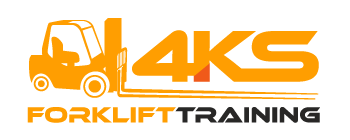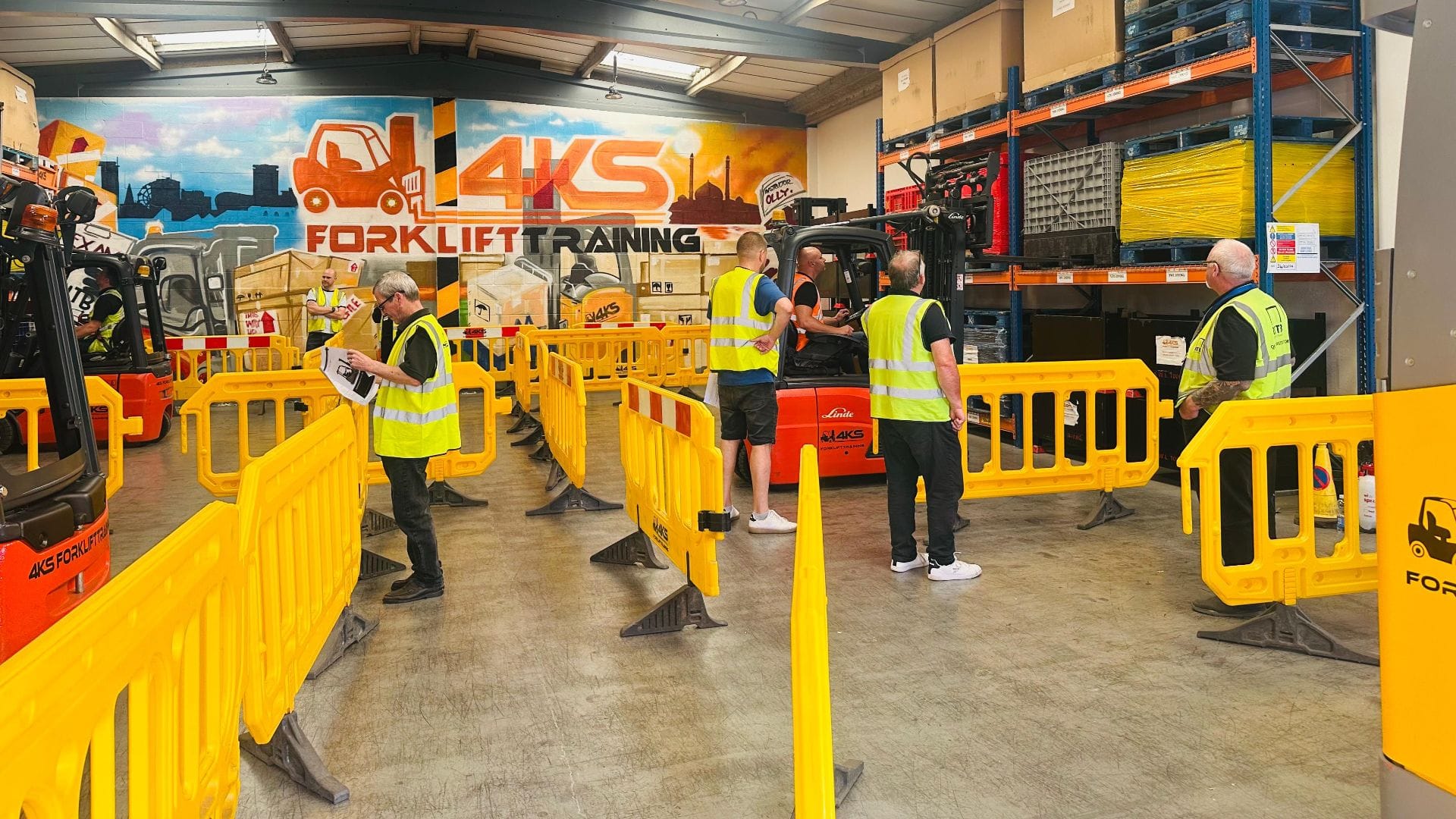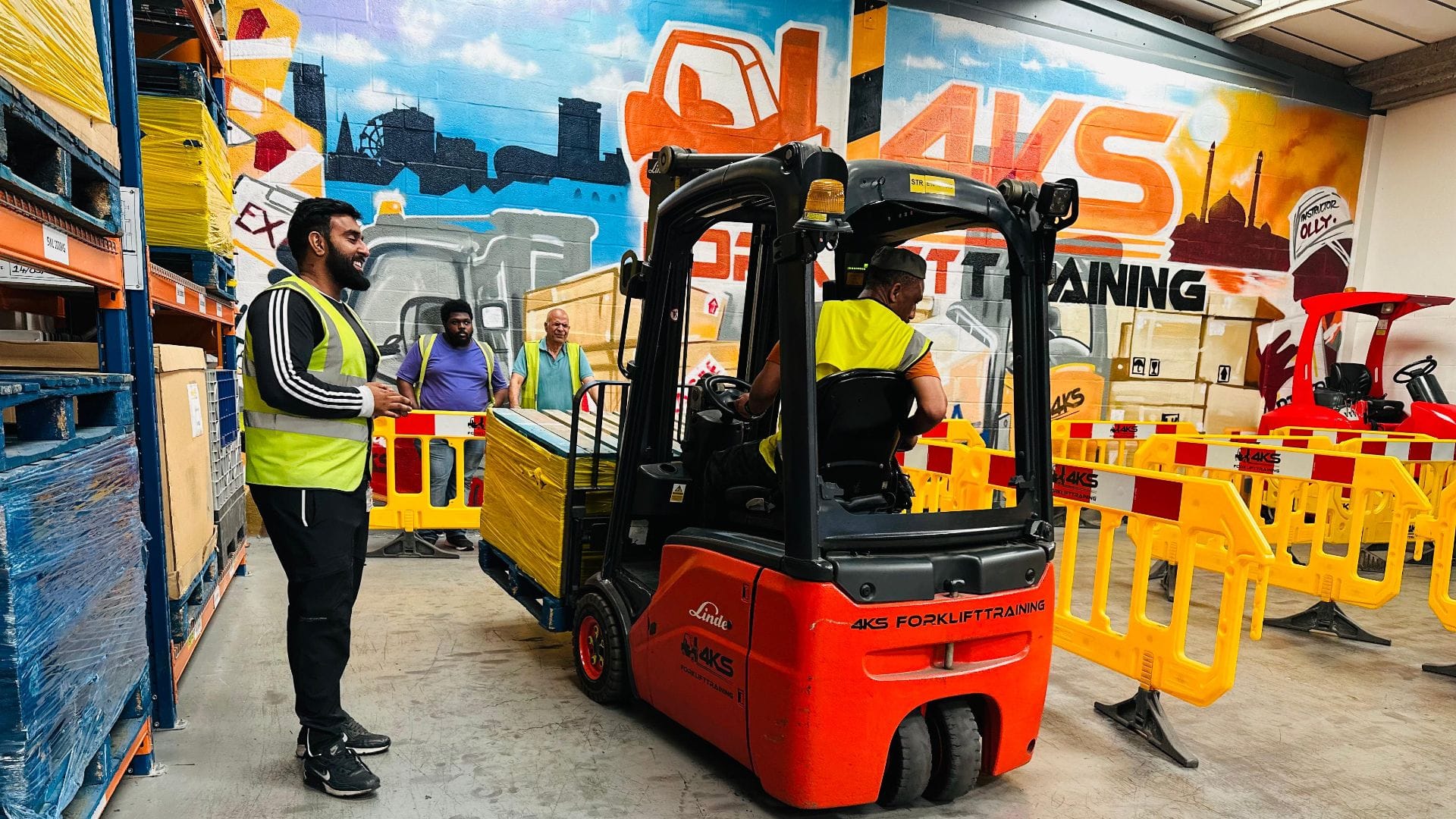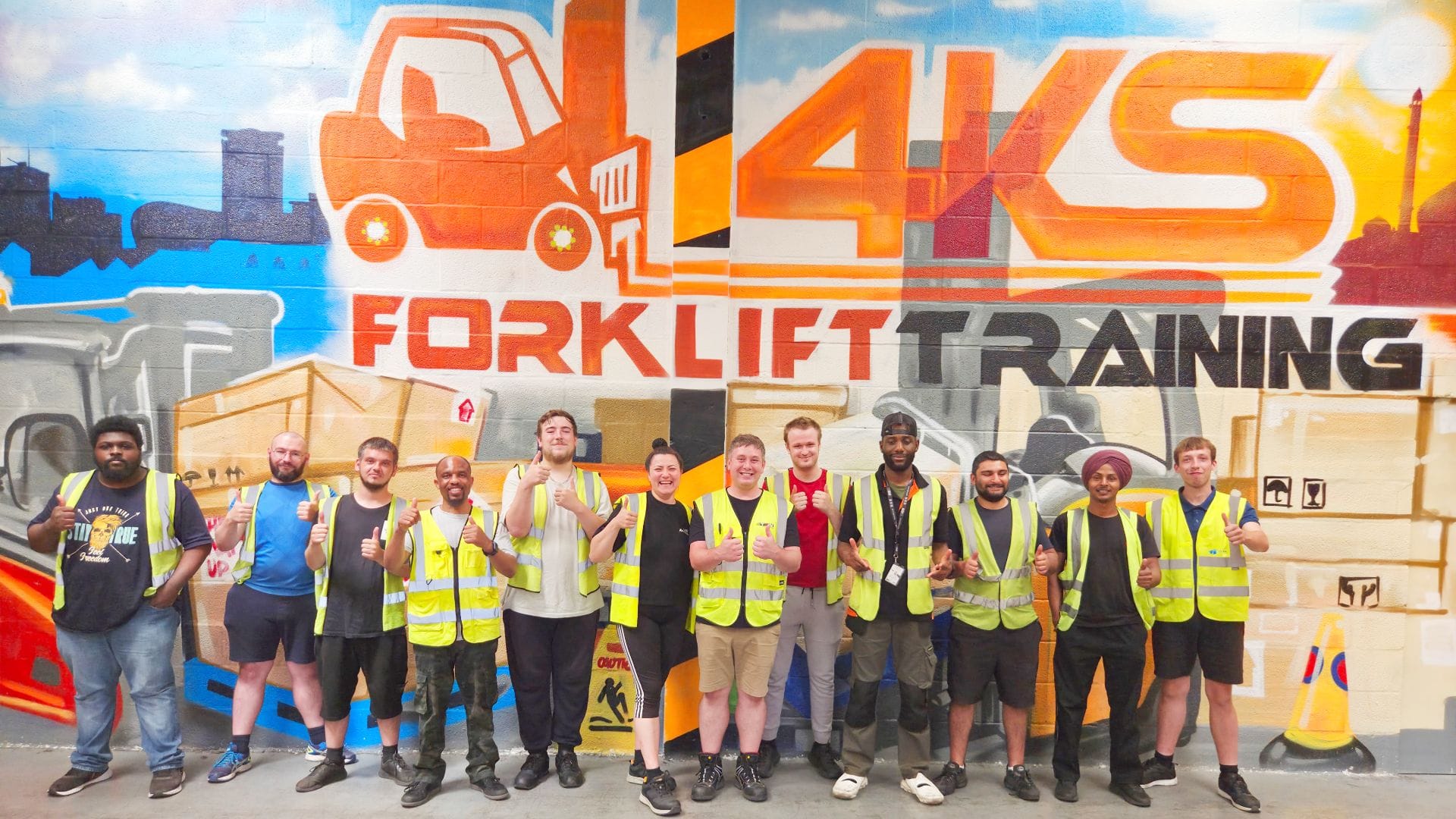How to stack with a forklift at high level
In this training video an operator demonstrates how to stack with a forklift counterbalance truck at high level. Visit our various forklift training courses for more information or to book your session today.
How to stack with a forklift - Counterbalance Truck
The stack should be approached squarely and carefully and the load should be around about 15 cm, (6 inches), away from the stack. This is to discourage pedestrians from walking through the gap.
It helps considerably if the truck’s steering wheels are straight at this stage.
Secure the truck whilst stacking
It is necessary to apply the parking brake and engage the gears in neutral when using the truck’s hydraulic controls. This is true even for very minor adjustments of the hydraulic controls and failure to do so leads to a serious penalty during a forklift test. It would be fair to say that this is one of the most common faults on test especially for those undergoing refresher training.
Reduce rear tilt to minimum
The next step is to reduce the rear tilt to a minimum amount. On some occasions it is necessary to remove rear tilt completely an example being when stacking a tall load into a tight racking space. It is, however, usual to teach trainees at this stage to leave a small amount of rear tilt applied to ensure load stability.
Raise the load to the correct stacking height
The load should now be raised to the correct height for that particular stack. Before doing this the operator should look upwards on high stacks in case of overhead obstructions. A glance to either side is usually a good idea too in case pedestrians are around. Operators should not permit anyone to walk near or underneath a raised load.
Note that it is not necessary to go too high as this makes subsequent lining up of the stack more difficult. As a guide, leave about 10 to 15 cm clearance. (4 to 6 inches)
Drive forwards over the stack
After releasing the handbrake and engaging forwards direction the truck can be driven so that the load is over the stack. The operator should look side to side first and then up or ahead to ensure the load clears everything.
Because a small amount of rear tilt remains it is necessary to stop a little bit “short” to allow for this to be adjusted.
Once in position the handbrake is applied again and neutral engaged.
Tilt Mast Forward to the vertical position
If a small amount of rear tilt has been left, now is the time to bring the mast to the vertical position. This should be done carefully so as not to accidentally engage too much forward tilt which, in the case of metal stillages could cause the load to slide off the forks.
Lower the load onto the stack
The load should now be carefully lowered onto the stack ensuring that it is engaged all around and secure. Care should be taken to ensure that the forks are free in the load and as level as possible.
Prior to reversing from the stacking position
The operator should look all around and check properly over both shoulders before reversing out of the stack. The safest approach is to look behind last thing i.e. engage reverse and release the parking brake first whilst keeping the service brake applied. After looking behind, check that the forks are coming out of the stack without fouling anything and then continue to look behind with occasional glances at the forks.
Some trucks are fitted with mirrors. Whilst there is no harm in using them as an additional check they should not replace a physical look behind.
Reverse out of the stack
The truck should be reversed until the forks are about 15cm, (6 inches) away from the stack. This gap serves two purposes as it presents a barrier to a pedestrian and ensures that the forks will clear everything when being lowered.
Once at this distance the parking brake should be re-applied and neutral engaged.
Engage the forks in the travel position
The forks should now be returned to the unladen travel position. Reverse gear can now be selected and the parking brake released. It is essential that the operator looks over both shoulders before reversing and then continues to look in the direction of travel.
Although a relatively high stack is shown in this sequence the actual steps required to stack a load are basically the same for any height of stack. For obvious reasons it is usual to teach low level, eye level and high-level stacking in that order.
For more information on our Counterbalance forklift training or to book your course today on how to operate a counterbalance forklift truck, call us:





